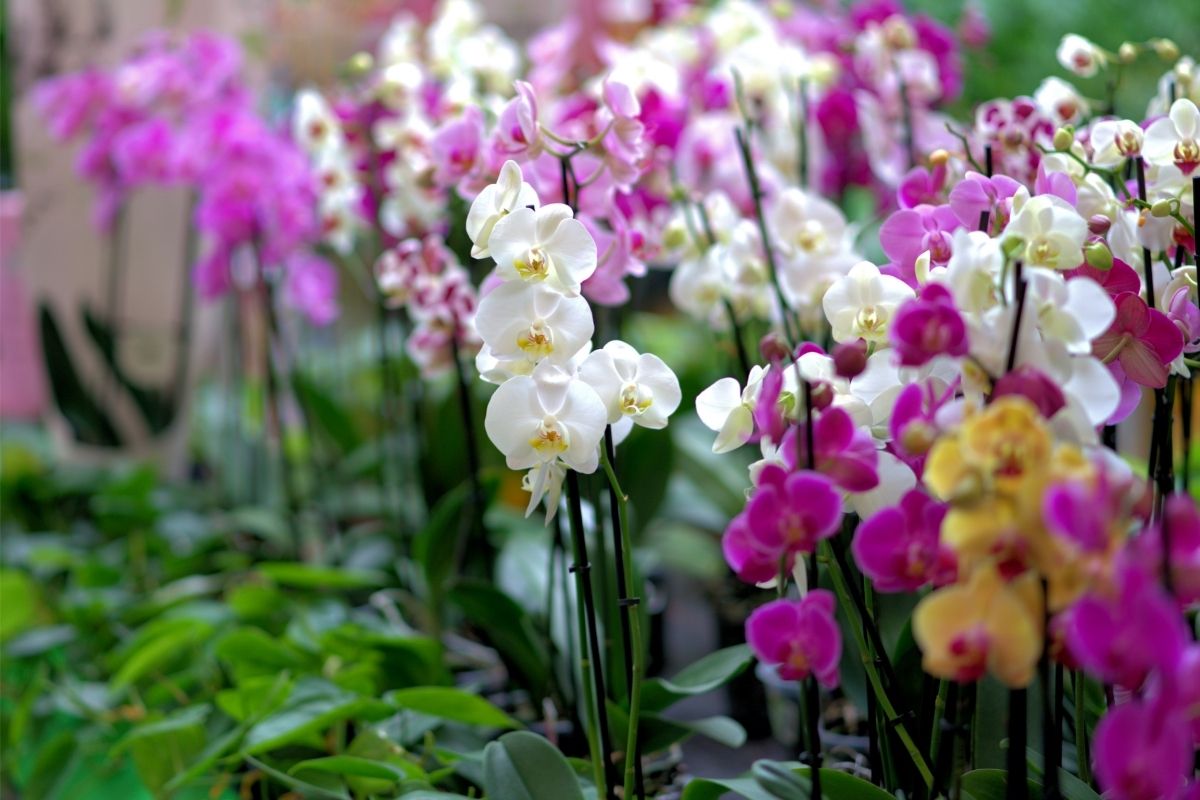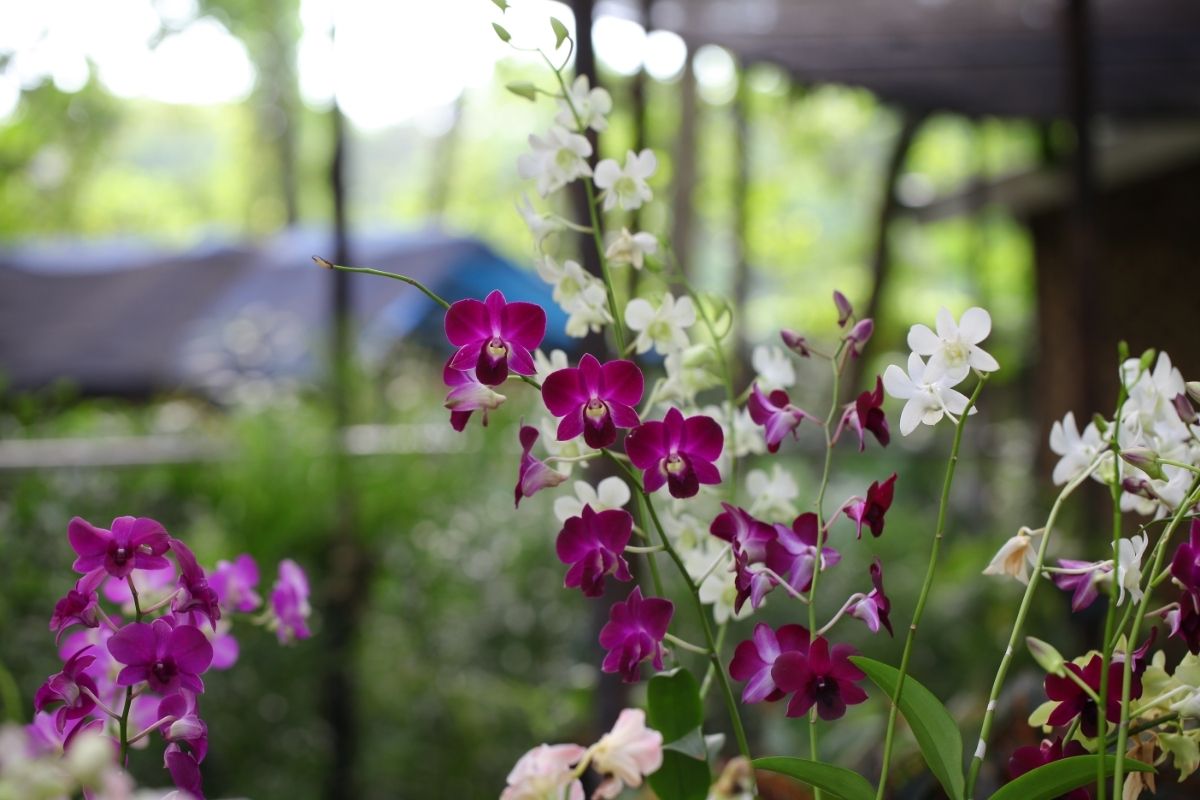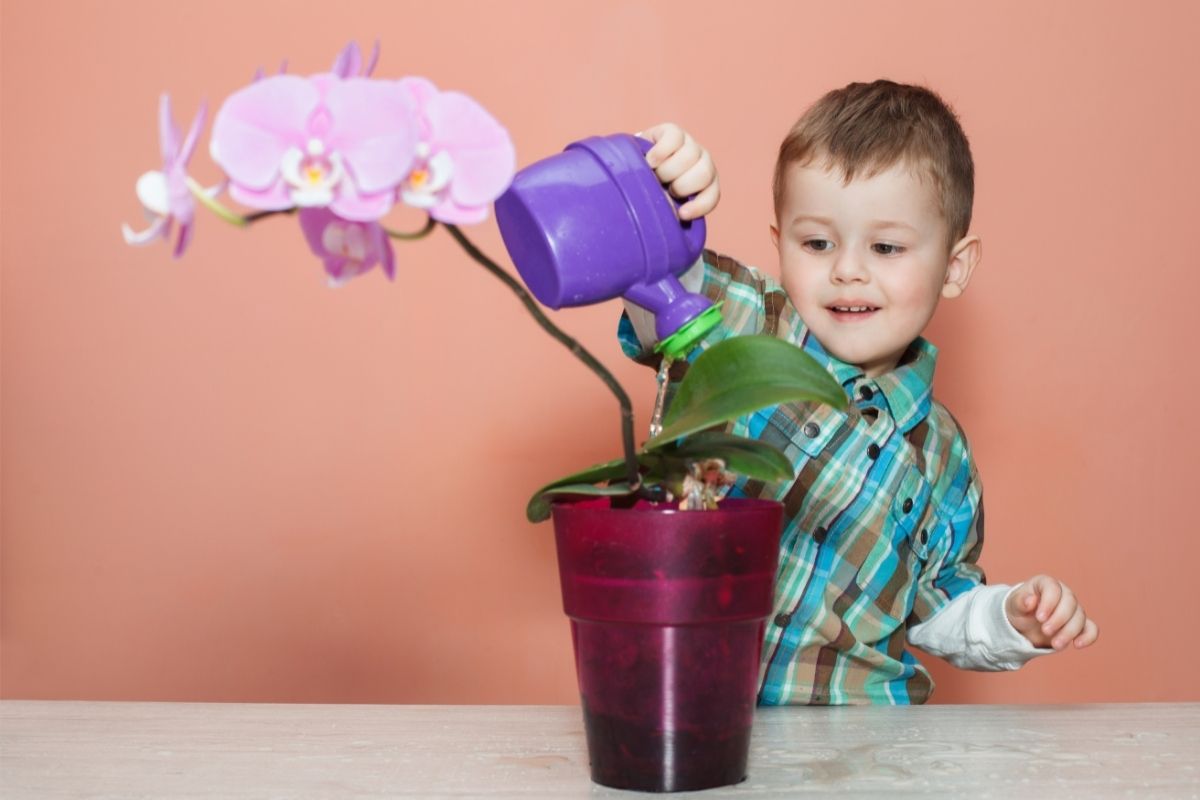One of the primary goals in orchid care is learning how frequently you should water your orchid. The two most common causes of orchid death are over-watering and under-watering.
Once you have cracked this code, the rest of the orchid care will almost seem like second nature.

What Is An Orchid?
Orchids are said to have existed for millions of years, dating back to the time of the dinosaurs. Except for Antarctica, they can now be found growing on all continents.
Many orchid species are found in the tropics, while others grow on gloomy forest floors and still others reside in chilly meadows.
The first thing that stands out about these plants is their blossoms. Again, they can differ on many levels, but a few features stay consistent.
First, the flowers are bilaterally symmetrical, which makes them visually appealing because each side mirrors the other.
Each flower has three petals, three sepals, and a column in the center where everything comes together.
Because the reproductive structures are situated in this column, the pollen clusters are referred to as pollinia.
The lip refers to the bottom petal, which is typically highly showy and broad in order to attract pollinators.
While most people associate orchids with vibrant colors and unusually formed flowers, this is not always the case. Orchids have traditionally been used for purposes other than decoration.
The fluids and extracts from the flowers, leaves, and roots are and were used for medical or cosmetic reasons in various regions of the world.
Parts of the orchid plant are used to make dyes, pastes, poultices, washes, flavorings, fragrances, and other products.
Different Types Of Orchids

Orchids are one of the world’s largest and most diversified groupings of flowering plants. Many orchid varieties thrive in highly competitive habitats, such as tropical climates where orchids compete with other plants to attract pollinators.
As a result, orchids are among our favorite bee-attracting flowers. Orchids, which bloom in every hue except blue and black, are noted for their colorful and sweet-smelling blossoms, which make them some of the best aromatic outdoor plants.
Some orchids, such as epidendrum orchids, flourish in the garden, while others, such as paphiopedilum orchids, make excellent houseplants.
Orchids have a reputation for being difficult to care for, yet many varieties, such as Phalaenopsis orchids, are among the easiest flowers to grow.
The Best Environment For Orchids
If possible, keep orchids near a south or east-facing window. They require a great deal of light, but not direct light.
If they are near a west-facing window, the light will be too bright, therefore you may need to cover the window with a sheer curtain. North-facing windows will not give your orchid adequate light.
Almost all orchids prefer high humidity, so when there isn’t enough humidity in the growth environment, an orchid may suffer significant harm.
In a nutshell… If you live in a low-humidity environment, one of the most important ways to maintain your orchid healthily is to provide artificial humidity.
Adjusting humidity can be performed by spraying your plant on a regular basis, installing a humidity tray beneath its pot, and managing the airflow into the orchid growth structure.
Orchids do best in temperatures ranging from 60 to 75 degrees Fahrenheit. These mild temperatures, combined with some air circulation, will allow your orchid to grow large, gorgeous blossoms.
How Often Do You Water An Orchid?

The roots of orchids are surrounded by a tissue-paper thin membrane called the velamen. This multipurpose membrane quickly absorbs huge amounts of water, sticks to uneven surfaces, and promotes mineral and salt exchange.
Orchid velamen, like an expensive water meter, is a good indicator of your plant’s water requirements.
Velamen is white or silvery when dry, and green or mottled when freshly moistened, but this can vary between orchid species.
Learning to read your orchid roots is the greatest way to ensure proper watering. Remember that most orchids like to be slightly under-watered rather than overwatered.
Orchid roots that are consistently damp decay, and the plant withers.
The frequency with which you water your orchid will be determined by your climate, humidity levels, and potting material.
Orchids often require watering every several days. Overwatering orchids is the most prevalent mistake when it comes to watering them. Root rot is a disease that is frequent in this type of plant.
You should plant your orchids in soil that is fast-draining and use a potting mix that is moss or bark-based for best results.
How often you need to water your orchids will depend on what kind of mix you choose because if you use bark-based mix, the water will drain faster which means the orchid will need to be watered more frequently.
On the other hand, the moss-based mix will retain more water, thus not needing to be watered as frequently.
If you are planting your orchid in a pot, it must be one that has enough drainage, you will know if it is the right type of pot if you see small holes in the bottom of it.
It’s critical to understand the watering regimen for the various orchid kinds.
If your orchids have pseudobulbs, which are larger stem structures that hold water, the orchid potting mix may need to dry out a little between watering.
Epiphytic orchids that grow on tree branches in tropical rainforests are evolved to receive water from daily rain, therefore they require more frequent watering.
The size of the pot directly influences how often you should be watering your Phalaenopsis orchid.
The material also is important, since terracotta pots will absorb more water than the plastic slotted ones will.
Planting phalaenopsis orchids in smaller pots results in less potting material that absorbs water, causing the orchids to dry out faster.
Larger Phalaenopsis orchids have more locations for water to adhere and more substance to absorb water into, so they keep more humidity.
Larger Phalaenopsis also dry out at a slower rate, requiring more space between water cycles and a longer drying out period.
Water your orchid based on how damp the soil feels to avoid overwatering. Gently press a couple of fingers into the earth and then pull them out.
You do not need to water your orchid if you notice any moisture on it. If you don’t feel any wetness, it’s time for a soak.
Potting your plant in a glass pot might also help you keep track of whether it needs water. The condensation will be visible in a clear pot, and when there is no condensation, it is time to water.
Common Orchid Watering Mistakes
Always water your orchids in the morning, regardless of the variety. Always.
Water can become stagnant in the developing tips of phalaenopsis or the flower sheaths of Cattleyas when watered at night.
This promotes the spread of bacterial and fungal infections. Orchid plants should be completely dry before going to bed.
Orchids are pretty good at communicating what they require. During the growing season, pseudobulbs should be fat and plump, with fleshy leaves that are thick and held up off the potting material.
During the winter, some deciduous orchids may shrivel.
Finally, another common mistake that people make is watering their orchids too often which can cause them to sit in still water, causing things like rot. Instead, make sure that the plant is dry between watering times.
Related: How To Revive A Dying Orchid Plant In Five Steps — Learning The Ropes
Summary
Orchids are some of the easiest plants to look after, especially the Phalaenopsis variation, but they typically fall victim to being overwatered, so it’s important to know how regularly they should be watered.
Unfortunately, there is no clear answer as to how often orchids need to be watered as it depends on a lot of things such as what soil mix you use, the type of orchid, and the local climate.
However, once you can read the signs of an orchid that is in need of watering, you will be able to put the puzzle pieces together, and the rest will be smooth sailing.
Editor’s Recommendations
50 Types of Orchid Flowers You Need to See (Including Pictures)







